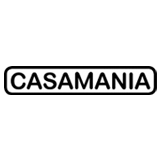'Norman said the president wants a pyramid': how starchitects built Astana
News from the Web
If you could see through the forest of selfie-sticks, the view from the top of the central pavilion of the Astana Expo was a prospect like no other. It was strange enough to be standing on a glass footbridge at the summit of the tallest spherical building in the world – nicknamed the Death Star – with glass bubble elevators zooming up a central neon-lit atrium behind you and a precipitous void plunging beneath your feet. All that was missing was Luke Skywalker dangling from the bridge.
But then you looked out to the horizon to see an assorted collection of pyramids, golden cones and bulging mirrored towers, lined up like a row of awards in a particularly gaudy trophy cabinet, stopping abruptly to give way to the rolling grasslands of the Eurasian steppe. Expo sites are always surreal affairs, as souped-up fairgrounds of nationalist hubris, where novelty pavilions compete for attention with multicultural buffets, marching bands and cavorting mascots. But the weirdness on show here wasn’t the Expo. The chief novelty was the city of Astana itself.
At one end of a monumental axis stands the biggest tent in the world, the Khan Shatyr shopping mall designed by British architect Norman Foster in the form of an inflated plastic yurt that glows pink and green by night. Housing dodgems, a rollercoaster and an artificial beach (with sand imported from the Maldives), it is a tacky pleasure dome that Kublai Khan could only dream of.























